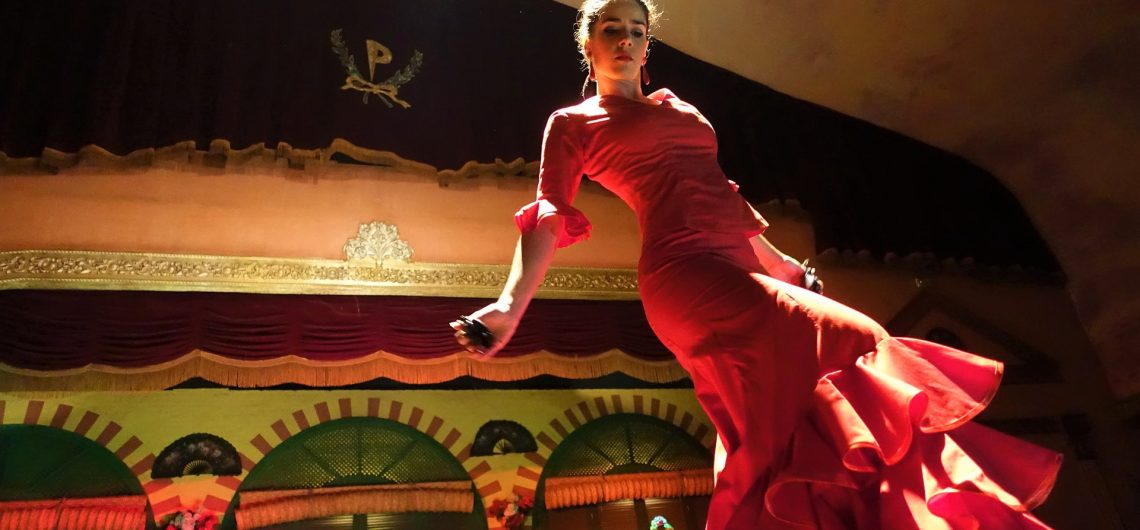Considered to be one of the main representations of Spanish culture, flamenco is a form of artistic expression with a long tradition behind it, the product of a fusion of dance, singing and guitar. Today, we invite you to delve deeper into this art, which was listed as Intangible Cultural Heritage of Humanity in 2010. This means – and the Spanish will have to forgive us – that it’s made up of all of us! 🙂
Passion and intensity are, undoubtedly, the words which best characterise flamenco. They can be found in both the pain conveyed through the cante jondo and the joy and sensuality of Sevillanas dancers. The expressiveness of this art brings out intense emotions and touches anyone who watches it, regardless of their language, whether through the stamping of its steps, its colourful typical costumes, the lament of Gypsy voices or the frenetic beats on the cajón, leaving any audience member’s heart racing to keep up with the fast-paced rhythm.
Although there is a great deal of controversy surrounding its origins, flamenco as we know it today was born in Andalusia, around the 18th century, between the provinces of Cadiz and Seville. The first artists appeared in the Triana neighbourhood of Seville which, along with Jerez and Cadiz, would contribute to flamenco shifting from folk art to become an artistic genre.
Flamenco emerged as a symbol of identity for several different groups and communities, especially the ethnic Gypsy community, who played an essential role in its evolution. The socio-economic and cultural coexistence of Arabs, Jews, Gypsies of Indian origin and the native people of Andalusia gave rise to this unique form of cultural expression, not found in any other part of the world. This is why it can’t be categorised as ethnic dance or music, because it represents diversity, rather than a feature of a specific ethnicity.
We can currently find flamenco dotted around the whole of Spain, and it is well known throughout the world. Although it originates from Seville, nowadays Madrid plays a prominent role in promoting this art, for instance, through its recording industry, training for artists and holding of shows. In Madrid, just like in Seville, on any day of the week you can watch impressive flamenco performances in the city’s theatres or go to small singing and dance recitals in tablaos: flamenco venues or bars where you can enjoy the purest flamenco, whilst also savouring a delicious dinner or a glass of fine wine.
So, shall we go and watch some flamenco? Discover the authenticity of this art, formed of a combination of dancers, players and singers, alluding ironically to the cultural diversity of its beginnings. Click here to find out about the tours around the Spanish capital and dive into this sea of emotions. You’ll feel like a local in no time!






